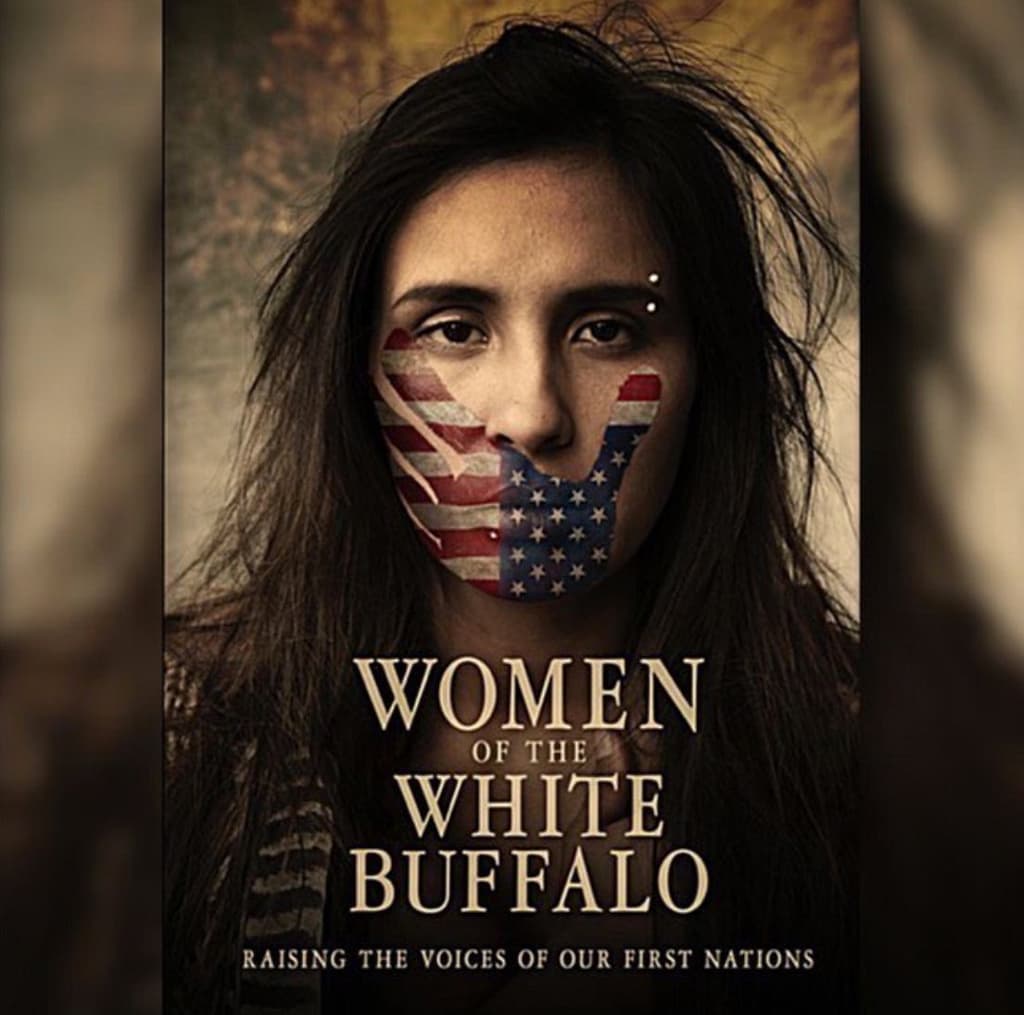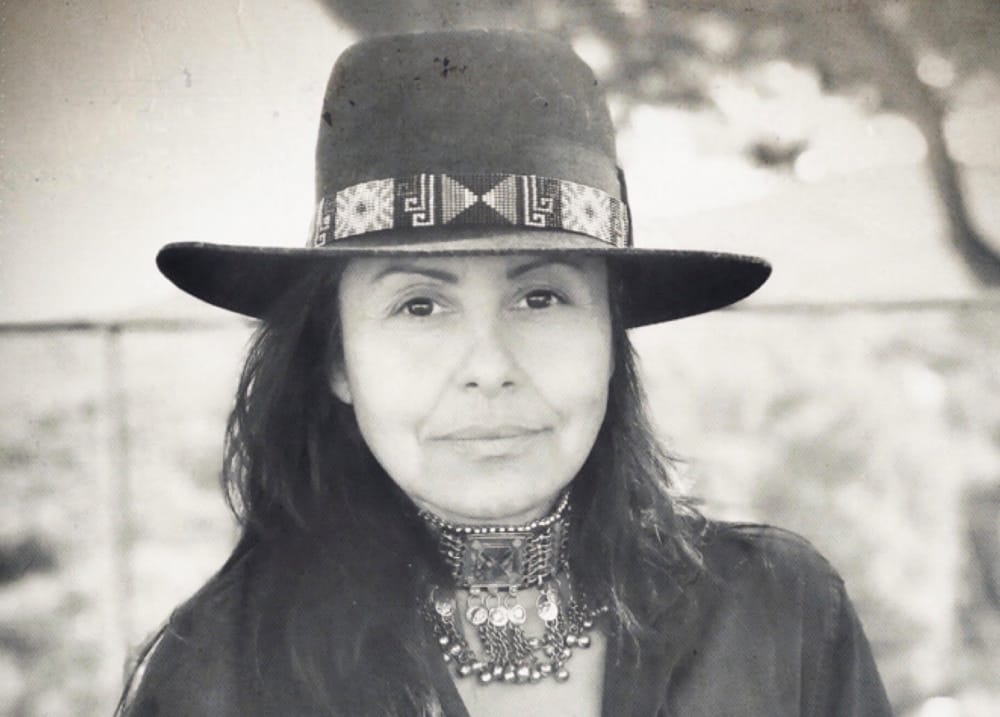The White Feather Foundation supports efforts to end suppression and preserve Lakota culture through the documentary Women of the White Buffalo, which was directed, written and produced by renowned filmmaker and artist, Deborah Anderson.
For two months, Anderson lived alongside the tribe in South Dakota, recording their intimate narratives to shine a light on the horrors they continue to face. At the same time, she captured their hope and progress to overcome those obstacles and restore their culture to its rightful place.
We caught up with Anderson to discuss the journey of the film
TWFF: How did you come up with the idea for the film?
DA: I was actually at the Leica store in Palm Springs to get my camera cleaned when I overheard an employee discussing how a friend shot a series of wild horses and buffalo on a nearby reservation. Suddenly, my ears perked up. I thought, “How amazing would it be to go visit the landscape of one of the reservations and photograph these powerful animals,” which was odd because I’d never shot anything wild before.
As I drove home, what hit me harder was the desire to capture the beauty of the Natives in their regalia on their land, as in my ignorance I imagined Native women with feathers in their hair, wild horses and teepees. So I searched the web for ‘Native American Indian Woman’ and the numerous pages that came up dumbfounded me. I learned that thousands of Native American women are going missing, being raped and or are being murdered around the country on a yearly basis and none of this is front page news. It was then that I knew I wanted to document the stories of the modern day Native women, to bring their stories to people like myself that have no idea of what the Indigenous peoples continue to experience in America. It soon became clear that this was the path I was meant to walk as doors opened in ways that I honestly could not have imagined.
TWFF: Once you decided to make a film, how did you go about finding Indigenous women to interview?
DA: I contacted my friend and healer Kate Vmeer and spoke to her of my desire to move forward with this project, so she introduced me to a young filmmaker, Kumiko Hayashi, as she knew she was connected to people on the Pine Ridge reservation. I reached out to Kumiko and told her of my idea and she said they had been praying for an opportunity to have their stories told. She then connected me with a much revered Elder, Carol Iron Rope Herrera. I reached out by phone to Carol and opened my heart expressing my pull towards this important work. She responded, “We’ve been waiting for you.” I was blown away and deeply moved by her words and so I went to work and within a couple weeks I’d raised enough money for a team of five to go to the reservation and begin documenting the stories.
TWFF: How did you first get involved with The White Feather Foundation?
DA: Julian Lennon is like a brother to me. He came for a visit to Idyllwild, California where I was living and I told him about what I’d learned of the Native women in the US and Canada, and that I felt this was something we had to bring awareness to. As an advocate for preserving native cultures, it was a no-brainer for him. He became an Executive Producer on the film and the Foundation also lended support. Julian and I have always been in alignment—when you find somebody who speaks your language and have a deep connection with, you can unite to bring more attention to important issues and promote change.
What’s really wonderful was that this was a 100% donation-based project. Not one person or organization ‘invested’ in this. It was truly a beautiful show of support.
TWFF: I’ve seen the film and many of the stories are very tough to watch because of what these women have endured. Did you have any trouble getting the participants to open up to you and share such intimate details of their lives?
DA: I showed up with my heart wide open.
Really, though, I thought about that sensitivity before I began. How do you tell a story so heartbreaking and keep your audience in the seat? Or at least make the film beautiful to watch amidst the terrors of the realities of what they face on a daily basis?
I was fortunate to have two weeks prior to my crew arriving to introduce myself to the community. I attended a Native American church meeting with [Elder] Carol Iron Rope Herrera where the group prayed and sang native songs of their ancestors. It was a beautiful ceremony and I think after that, because they respected and honored Carol, they trusted it was safe to talk to me. She was my gatekeeper and acknowledged I was there for all of the right reasons. I assured them I didn’t have some big production company behind me, I just wanted to get these stories told.
In those two months, I formed close relationships with all the women. I continue to see them to this day, and support them any which way I can.
TWFF: I’m glad you mentioned support because that was my main takeaway after I saw the film–I wanted to know how I could help. What can we as individuals do to help Indigenous people today?
DA: As of 19 February 2020, 574 Indian tribes were legally recognized by the Bureau of Indian Affairs (BIA) of the United States and about 200 more tribes are still awaiting recognition so that they can be registered for subsidiaries. There is enough Native energy surrounding all of us to be able to reach out, find out who your local tribe is, what they are doing and what they need. Ask how you can best support them.
You can buy their beautiful artwork, beadwork, designs etc. and in many smaller Indigenous communities they may be looking for various donations including your time, sanitary items for young women or volunteers for educational platforms. You don’t always have to empty your pockets.
I would just recommend you join the conversation and give the best way you can whether it’s time, money or spreading the word on social media about the issues they face. They’re open to many different ways of community support.
Recently, by way of raising funds, my dear friend and co-producer Rachelle and her husband Chris Stone donated a new teepee to a Rosebud Elder so she has a sacred space to educate the younger generations about the culture, ceremony and sacred ways. I was humbled to be able to help support even a small shift for their people in remembering who they are.
TWFF: But that’s not a small shift—that will likely last through several generations of girls.
DA: Thank you. I suppose it is—a small way that I could create a positive shift in their lives.
TWFF: You are also an Indigenous woman so I imagine this project was very dear to you.
DA: Yes, I personally have Indigenous lineage from my Grandfather’s side that traces back to the Caribbean Islands where I grew up, possibly to the Arawak, Carib or Taino tribes. I’m grateful for being able to parlay stories that might not otherwise be seen and feel fortunate to have a voice that helps get people interested in the subject.
TWFF: The film has screened at festivals around the country, earning the honor of Best Documentary at the Red Nation Film Festival. It also earned Best Director Documentary, Best Feature Documentary, Golden Era Humanitarian Award and Summerhawk Native American Award at the Idyllwild International Festival of Cinema, and Best Director Documentary Feature at the Los Angeles Independent Film Festival. What’s next for the film?
DA: Right now I’m focused on securing distribution for it and praying we’re able to get larger audiences to see it. I’m exploring both traditional methods of release as well as streaming platforms.

TWFF: Where can folks find you next?
DA: I will “Go Live with Leica” LA this Saturday, April 18, talking about the work at 2:30 p.m. Pacific Time. Tune in for that interview via Instagram. I’m also doing a flash sale of the images to raise money for the distribution to get the film out as soon as possible.
We also have an online gallery on the Women of White Buffalo website and for purchase inquiries you can email: [email protected]
TWFF: What’s next for you as an artist?
DA: I have relocated to Colorado to pursue a new film project. The working title is “The Lost Language of HER” I know that we are currently facing big changes as a collective on this planet and one of the most powerful things I keep hearing is that nature holds all the answers yet we have forgotten how to communicate with HER. It is time we listened once more as the Indidgenous peoples have been doing for thousands of years. Mother Earth is here to support us in so many ways and I believe remembering her language is the only hope humanity has of survival moving forward.
TWFF: Thank you for bringing awareness to the Lakota women. I’m sure anyone who sees this film will be moved by their narrative.
DA: I think everyone has a soft spot and an intrigue for the native understanding. The innate recognition is that we are all connected and Indigenous peoples are more relevant than ever before when it comes to humanities’ current situation. It’s been emotionally tough and really sad to know that in America we still have our first peoples suffering under the wrath of the federal government.
Humanity is hugely disconnected and we will spiral out of control if we continue to disrespect Native wisdom. It is clear we are in trouble in so many aspects of natural life on this planet and soon, I dare say, we will be out of time.
For updates on the film and photo exhibits, visit the website womenofthewhitebuffalo.com and follow Women of the White Buffalo on Instagram and Facebook. Stay in the loop about Deborah’s creative pursuits at deborahanderson.com.
Photo credits: Top, Tracee Stanley; Bottom, Deborah Anderson



Thank you so much for this amazing work and all the passion behind it. I have been an advocate for Native Americans all of my life, and this makes my heart soar. I will spread the word and do anything within my reach to help.